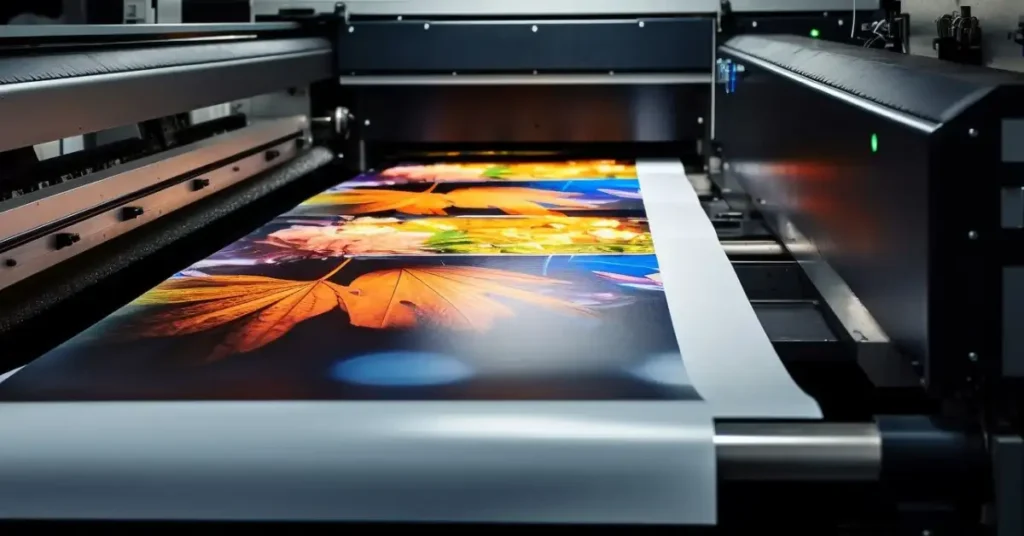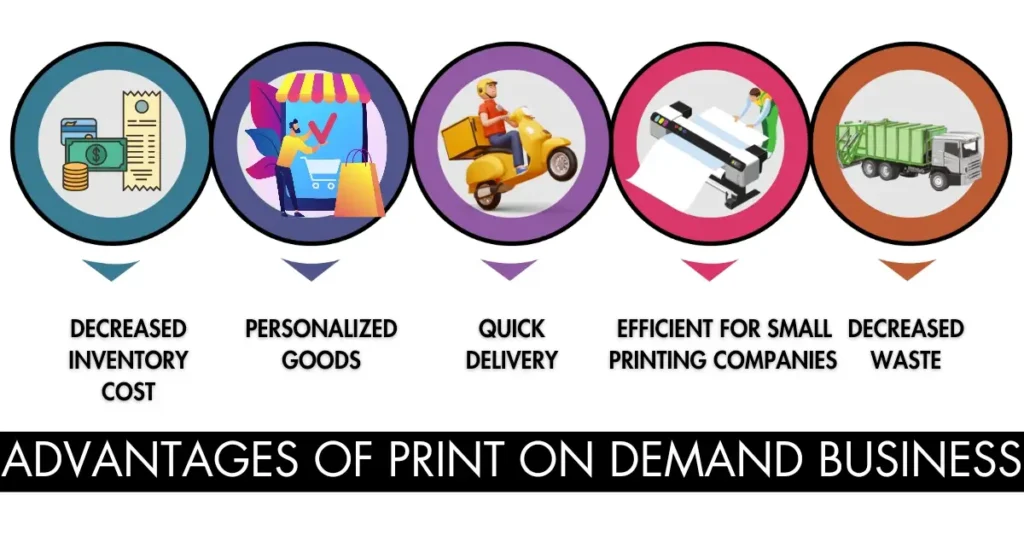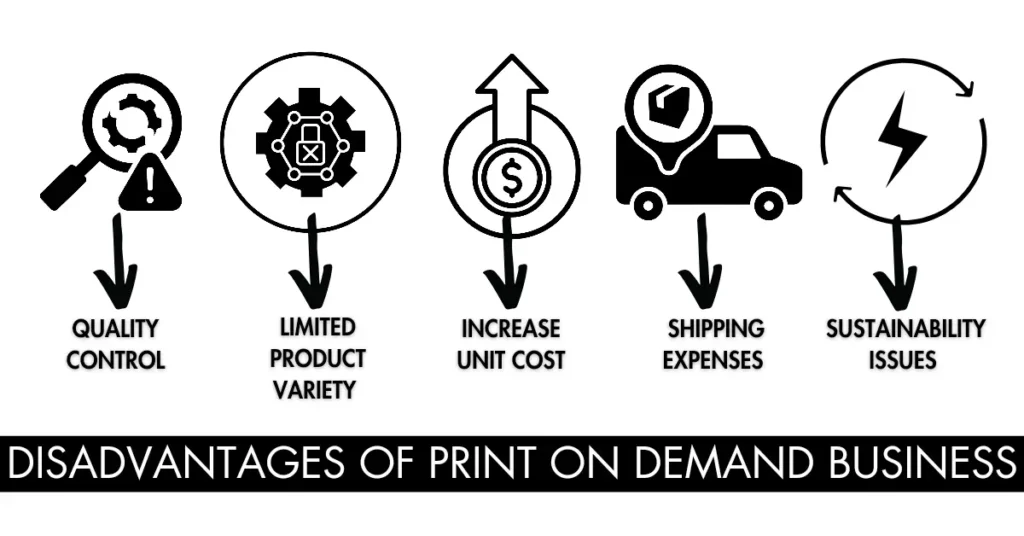Is Print on Demand a RELIABLE BUSINESS?
Print-on-demand is a game-changing concept in the evolving e-commerce business. Print on demand has improved the entrepreneurship environment by increasing the creative aspect. Print-on-demand (POD) is a dynamic and adaptable business strategy. It enables businesses to generate customized items without large upfront investments in inventory or production equipment.
So you don’t print unless you’ve sold something substantial. This article will introduce you to the world of printing on-demand services. It will also provide insights into how it has enhanced the printing market and printing artwork. POD has amazing potential it brings for businesses and designers.
Print-on-demand has evolved into a highly competitive market due to its business technology. POD offers custom designs and products. For example: printing tote bags, printing on cards, hoodies, greeting cards, printing wallpapers, printing t-shirts, and much more. The POD enables small business owners to compete in the global market with their limited investment.
All they have to do is create amazing designs on printing software and publish them on their company’s website. It enables you to print your fabric, print your hoodies, print your wallpapers, print your crockery, etc. As they have to prepare the article once it has been sold. POD allows the seller to supply various designs while also allowing customers to modify the design for themselves.
In a POD enterprise, you will need a supporting partner, who is a provider (such as Printify, SPOD, Apliiq, and others). These partners will assist you with everything from suggesting the materials for printing on them to shipping them.

How Print on Demand Method Differ from traditional methods?
POD is a relatively new method of printing things, as in traditional markets, a specific design is printed in standard size, color, and cloth, resulting in a decent inventory. Then you have to sell your goods to clients to finish the inventory. So, if you’re a new business owner, a creative artist, or simply someone interested in the notion of converting your drawings into physical things, then POD is the way to go because it provides a more secure approach to running a business than traditional printing.
Traditional printing can be inconvenient for several reasons. For instance, it’s riskier. You must make your best judgment as to what people will buy the most, this is a difficult task. Otherwise, it may end up with a large stack of products that didn’t sell for any reason. This method may also prove to be costly in the long run. Printing on demand enables entrepreneurs to design print-on-demand mugs, print-on-demand t-shirts, print-on-demand bags, print-on-demand cushion covers and bedsheets, or anything that customers demand without having a print shop. It works in a hierarchy.

How do print-on-demand Services start?
The French from their colonies in India introduced new embossing techniques for the manufacture of cloth in the second part of the 17th century. The initial method of printing involved manually applying Dyer patterns to the cloth or utilizing a variety of antiquated machinery.

Meanwhile, Calico printing was created in Europe as a result of the industry’s rapid advancement. Over time, several industries have emerged, supporting the printing notion. In the meantime, printed cotton was brought to the British market by the East India Company.
The applied color might be maintained due to the long-term bleaching. This was a costly and water-intensive technique. Even though the prints were rather basic and had less color at the time, the British became infatuated with them.

After printing on clothes the artist began concentrating on printing paper. Printers were being actively improved in parallel with computers as early as the 1950s. Remington-Rand was a pioneer in the field of high-speed printers. Therefore, a printing device for Univac computers was created in 1953 by researchers.
Printers became widely available in the 1980s. Paper printing swiftly became a supplement to direct-to-garment (DTG) printing. The first instance of print-on-demand services was introduced by multiple companies in the 1990s, coined around the printer known as Revolution. The creation of personalized products—from distinctive T-shirts to pillows—took a giant step ahead. A decade later, we witnessed a plethora of brands vying for a share of the DTG market.

Advances in technology have led to the emergence of numerous local print-on-demand businesses. Several technologies have been employed in the sector since then. The desired outcome directly affects the printing option.
The retail market soon lost its appeal and was replaced by e-commerce. There is a plethora of platforms available, including Wix, WooCommerce, Amazon, Etsy, eBay, PrestaShop, and Shopify. The Print On-demand services market has become more genuine and targets young people mainly because they are more interested in innovative styles and fashions. Product originality and personalization are now the primary factors used to assess sales conversions. For instance, eco-friendly print-on-demand is popular because it makes it possible to create anything using natural resources without adding unnecessary plastic to the environment.
Opportunities Print on Demand Brings for Entrepreneurs?
In recent years, print-on-demand has gained popularity as a commercial solution. Businesses can use POD technology in 2024 to optimize processes and satisfy the e-commerce industry’s rising demand for customized goods.
Businesses can offer a wide range of items with POD without having to keep inventory or do large-scale production runs. A clothing shop might, for example, offer customized shirts, jeans, mugs, covers, bedsheets, or scarves in a variety of patterns, hues, and sizes, and only print the garment once a buyer places an order.
Businesses can also utilize PoD to test new designs or goods without having to pay a lot of money. Before committing to larger production runs, firms can use Print on Demand to print a small number of products to test customer interest. This strategy can benefit companies by lowering the risk of investing in a product that might not be profitable.
All things considered, companies can employ PoD technology in a variety of ways to enhance their workflows and satisfy the escalating e-commerce industry’s need for personalized goods. Print-on-demand (POD) can provide businesses with several advantages in 2024, whether they are implementing sustainable practices, testing new ideas, or producing personalized products.
BENEFITS print on demand Has!
Print-on-demand offers companies many advantages in terms of expanding their clientele and boosting revenue. But to make well-informed decisions regarding their requirements, firms must also take into account the possible downsides, like problems with quality control and increased unit costs.
The benefits that Print on Demand offers are :

Decreased inventory Costs: Print-on-demand technology dispenses with the requirement for large-scale production runs and extra inventory by enabling firms to print a product only when a client buys it.
Quick Delivery: Delivery times are shortened thanks to Print on Demand technology, which also helps companies increase customer satisfaction by reducing long waiting times.
Personalized Goods: It enables companies to provide on-demand print services to clients according to their specific interests and tastes. This strategy can increase repeat business and foster consumer loyalty.
Efficient for small printing On-demand companies: PoD is an economical option for companies that manufacture modest amounts of goods. It lowers the cost per unit for small production runs and eliminates the requirement of minimum order numbers.
Decreased waste: Print-on-demand technology minimizes extra inventory and unsold products by printing just the products that customers order.
DRAWBACKS print on demand Brings!
The disadvantages print on demands offers are:

Quality control: Because different printing equipment and materials are used in PoD, there may be variations in the quality of the products. Making sure the PoD vendor has a quality control procedure in place will help to resolve this problem.
Limited product variety: Because it might not be economical to create every product using PoD technology, printing-on-demand services may not be appropriate for companies that sell a large range of products.
Increased unit costs: Because Print on Demand requires specialized tools and materials, it may have higher unit costs than typical printing techniques.
Shipping expenses: Because print-on-demand products must be transported individually rather than in bulk, print-on-demand technology may result in increased shipping prices for enterprises.
Sustainability issues: Although Print on Demand has the potential to cut waste, each product still needs energy and resources to be produced. To reduce their environmental impact, businesses must make sure that they are employing sustainable materials and methods.
Future Trends of on Demand Printing companies
In 2024, the print-on-demand sector is expected to see substantial growth due to several trends and technological developments. It is anticipated that the development of 3D printing technology will open up new PoD prospects in the manufacturing sector.
The growing need for personalized and customized goods is one of the biggest predictions for the Print-on-demand sector in 2024. Products that showcase consumers’ distinct personalities, styles, and interests are gaining popularity. This is a particularly common trend in the home décor, fashion, and accessory industries where buyers are looking for unique products instead of generic, mass-produced ones.

Businesses now rely heavily on e-commerce to reach their target audience, and the Print on Demand sector is vital to the e-commerce market’s success. Businesses may now offer a greater variety of items without having to keep inventory or do large-scale production runs thanks to PoD technology.
In addition, it is anticipated that technology in the Print-on-demand sector will continue to progress in 2024. New printing techniques, materials, and technologies will give companies greater opportunities to produce distinctive, high-quality goods. Additionally, by anticipating demand, cutting waste, and enhancing quality control, advances in AI and machine learning can assist companies in optimizing their print-on-demand (POD) operations.
Challenges of the POD Industry in 2024
The PoD business will likely expand significantly in 2024, but some obstacles could slow down this expansion. An important hurdle is the presence of competition. In recent years, the print-on-demand market has grown more congested due to the daily debuts of new competitors. Businesses now find it challenging to differentiate themselves and increase their market share. Businesses need to spend money on branding and marketing initiatives that set their goods and services apart from those of rivals if they want to stay competitive.
Quality control will provide further difficulty for print-on-demand products. Maintaining quality control can be difficult, particularly for companies that outsource their product printing to other parties. Products of poor quality can harm a company’s reputation and drive away clients and sales.

The Print on Demand industry may also encounter issues related to logistics and supply chain management. Businesses need to properly manage supply chain operations and logistics as their client base and product offerings grow to guarantee on-time product delivery. This can be difficult, particularly for companies that operate internationally and have to follow various laws and customs processes.
Lastly, the POD business faces major obstacles due to privacy and data security issues. Businesses need to make sure that consumer data is safe and compliant with data privacy laws when they gather and retain it. Cybersecurity risks, like data leaks and hacking attempts, can cause private client information to be lost and harm the image of a business.
Conclusion
On-demand print is a flexible printing technology that has grown in importance as a commercial solution for companies across multiple industries. It is expected that the PoD business will keep expanding in 2024 because of the growth of e-commerce and consumer desire for customized goods. However, there are some issues that firms must deal with, such as competition, sustainability, and quality control.
Businesses must make investments in quality control procedures, provide sustainable products, and set themselves apart from rivals to be competitive in the PoD industry in 2024. Businesses can fulfill client expectations in a rapidly evolving e-commerce market, produce distinctive items, and cut inventory costs by tackling these obstacles and utilizing the benefits of PoD technology.



